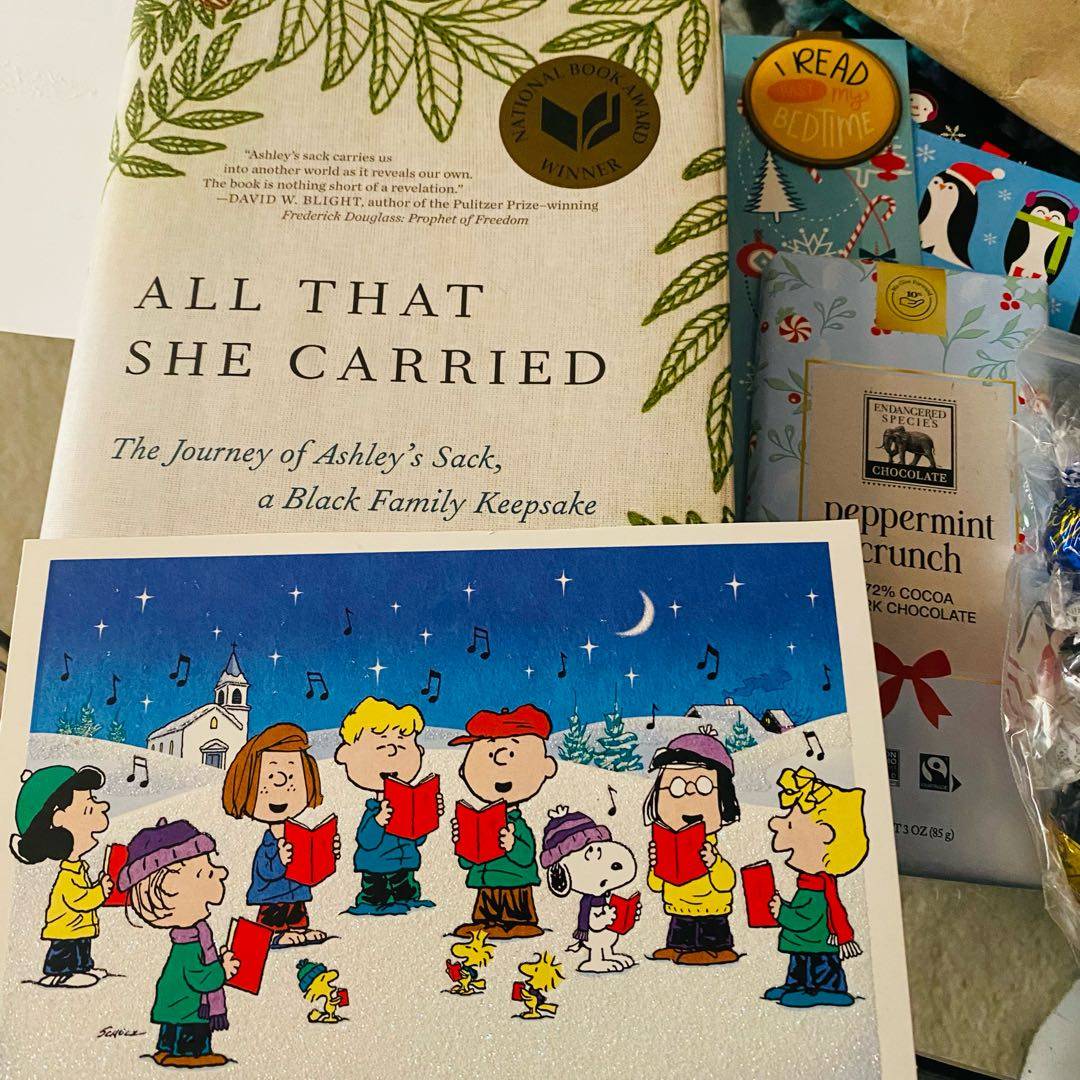
Thank you @Christine this is all so amazing. I can‘t wait to read this book.
Thank you @MaleficentBookDragon for running #jolabokaflodswap again.

Thank you @Christine this is all so amazing. I can‘t wait to read this book.
Thank you @MaleficentBookDragon for running #jolabokaflodswap again.
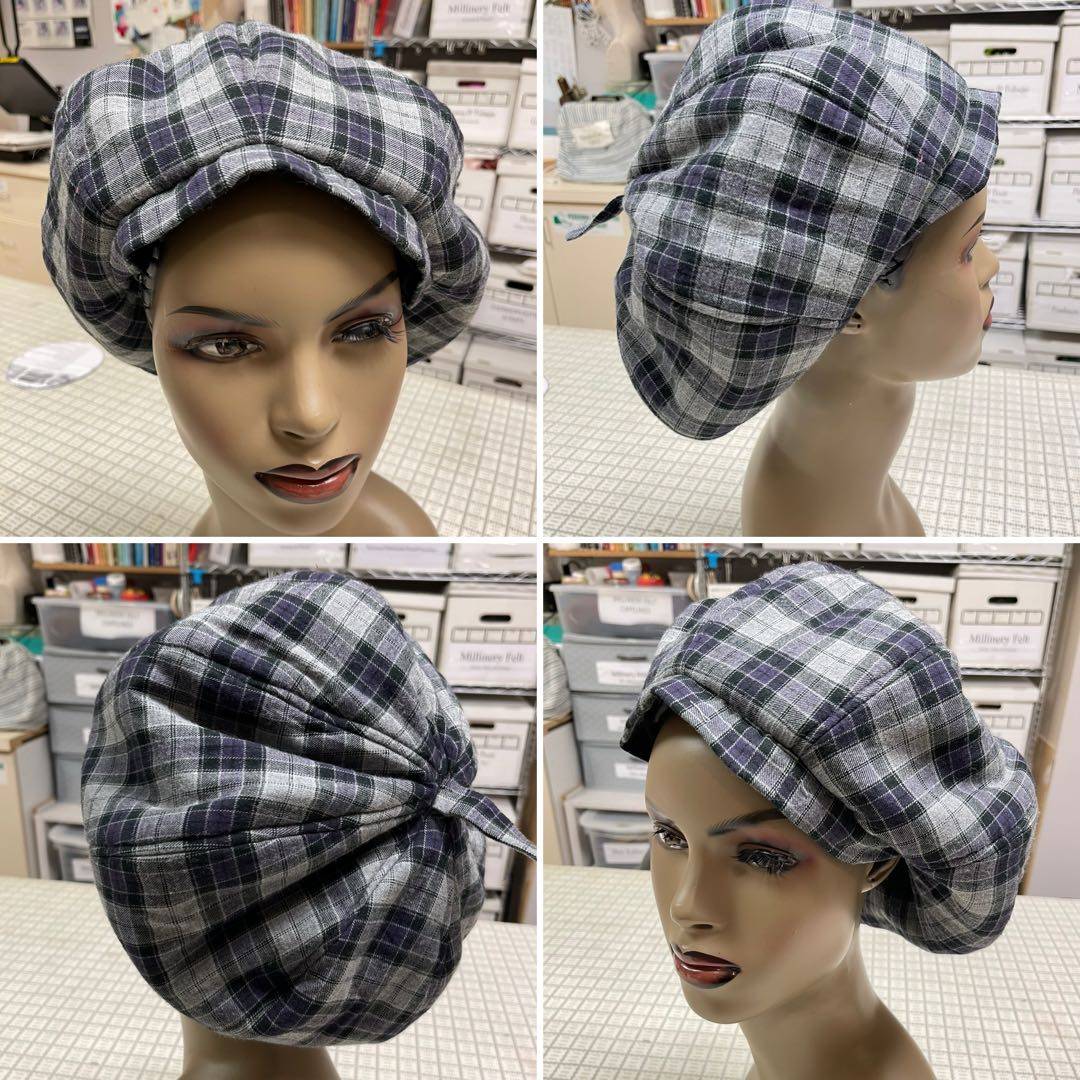
I love books that use an artifact as a touchstone for exploring history and material culture, and this one is fantastic.
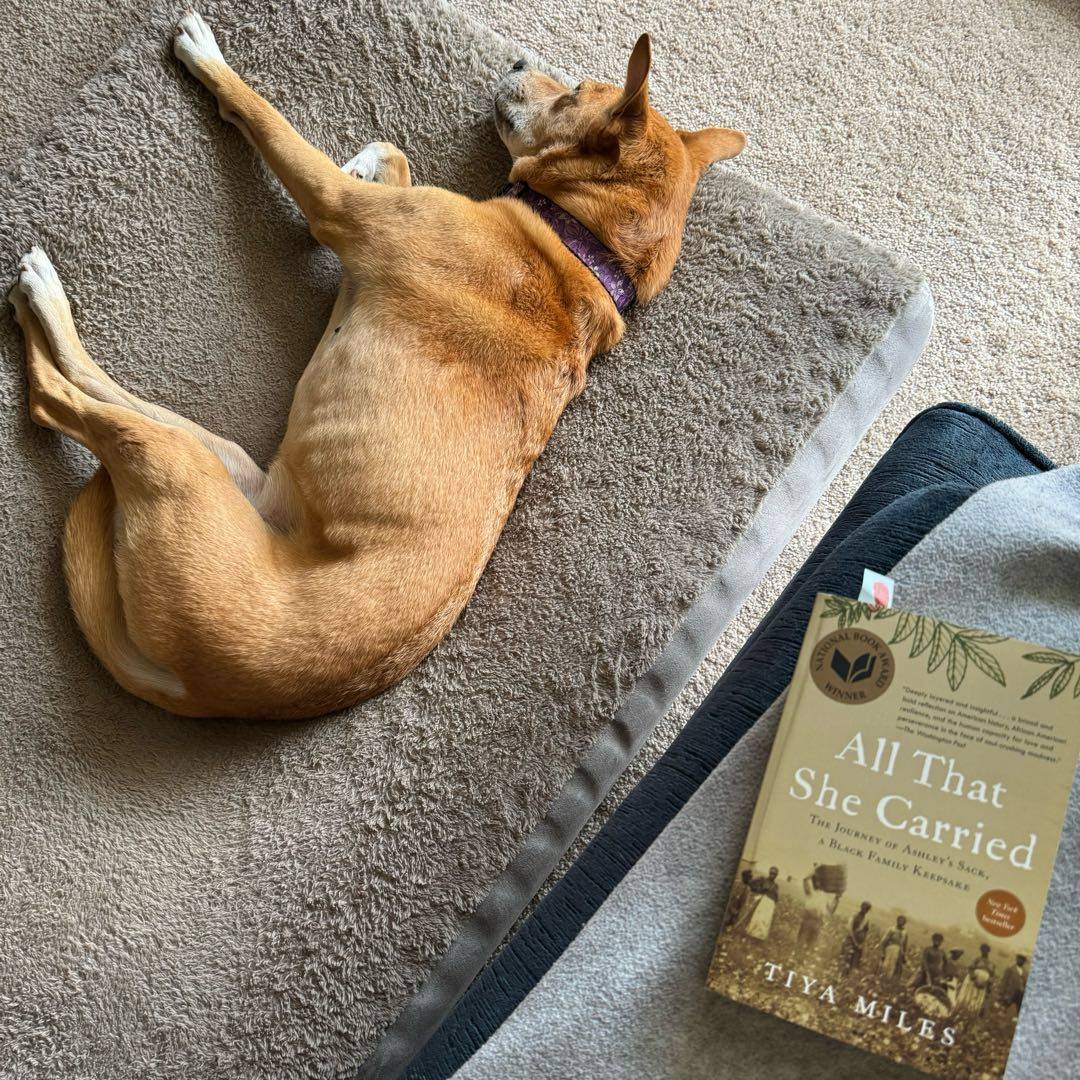
I appreciate learning about Ashley‘s Sack, a burlap bag passed through generations of black women, beginning with Rose, an enslaved woman in Charleston SC. The author researched so many aspects of life in Rose‘s time and since then. While not many details are known about Rose‘s family, there are records of other women who might have lived under similar conditions. The photos and illustrations are great, plus recipes, so print is the way to go.
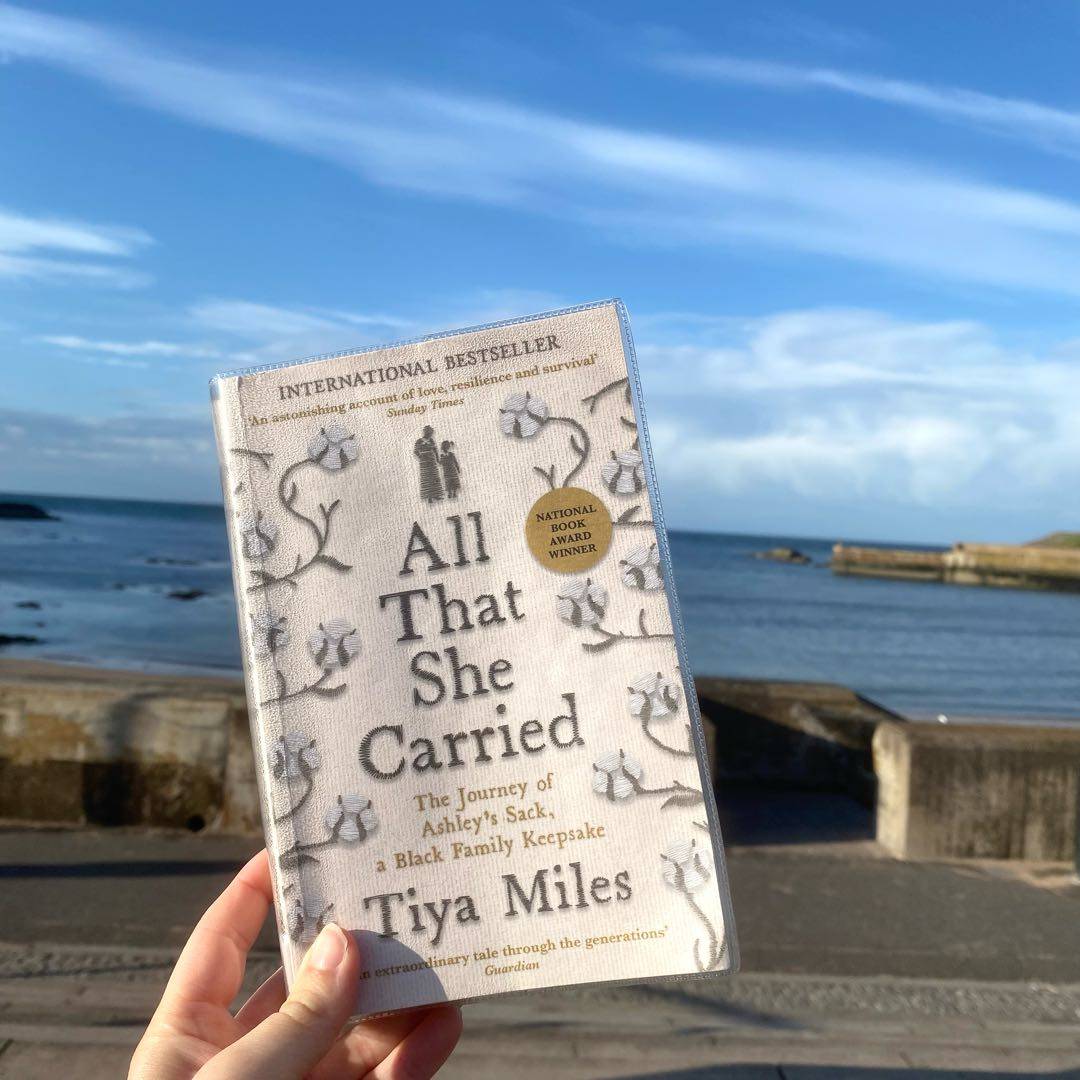
I was thinking of this book even when I wasn‘t reading it. I love that the author uses the cloth as a starting point to write about/give us perspectives from people who couldn‘t always leave a record of their lives/feelings. It will definitely stay with me. #womensprizeNF #nonfiction2024 (The Bluest Eye)

Next up from the #womensprizenf shortlist. Hoping to read them all before the winner is announced 🤞
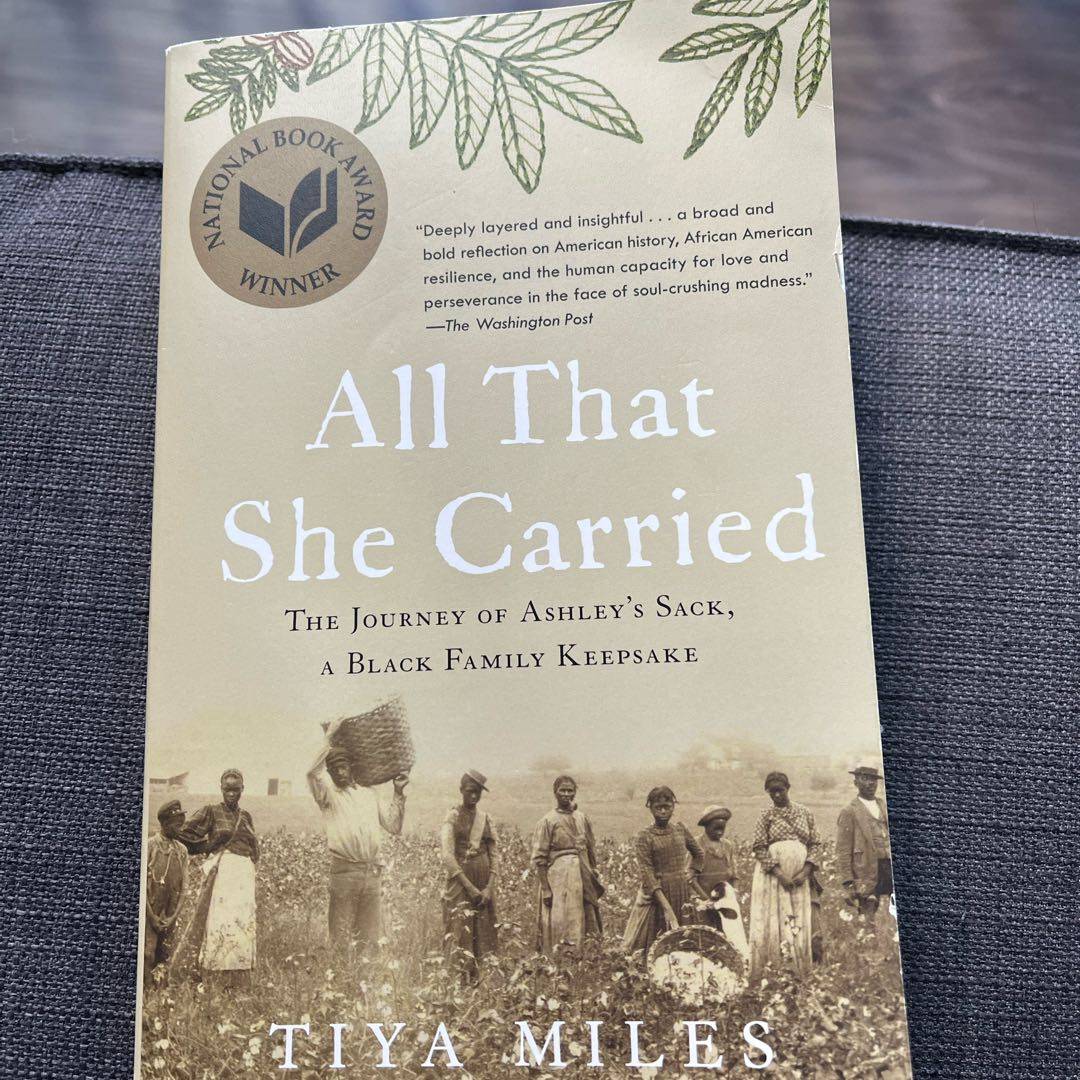
“When African American things are lost, the stories once joined to them weaken, memories of the past fray, historical evidence shrinks, and inter generational wisdom fades.” Such an important point especially in America as some people feel threatened about exploring & understanding the past parts of our history. There continues to be a need to discuss, discover, & understand how the past influences our current times. #bookspin
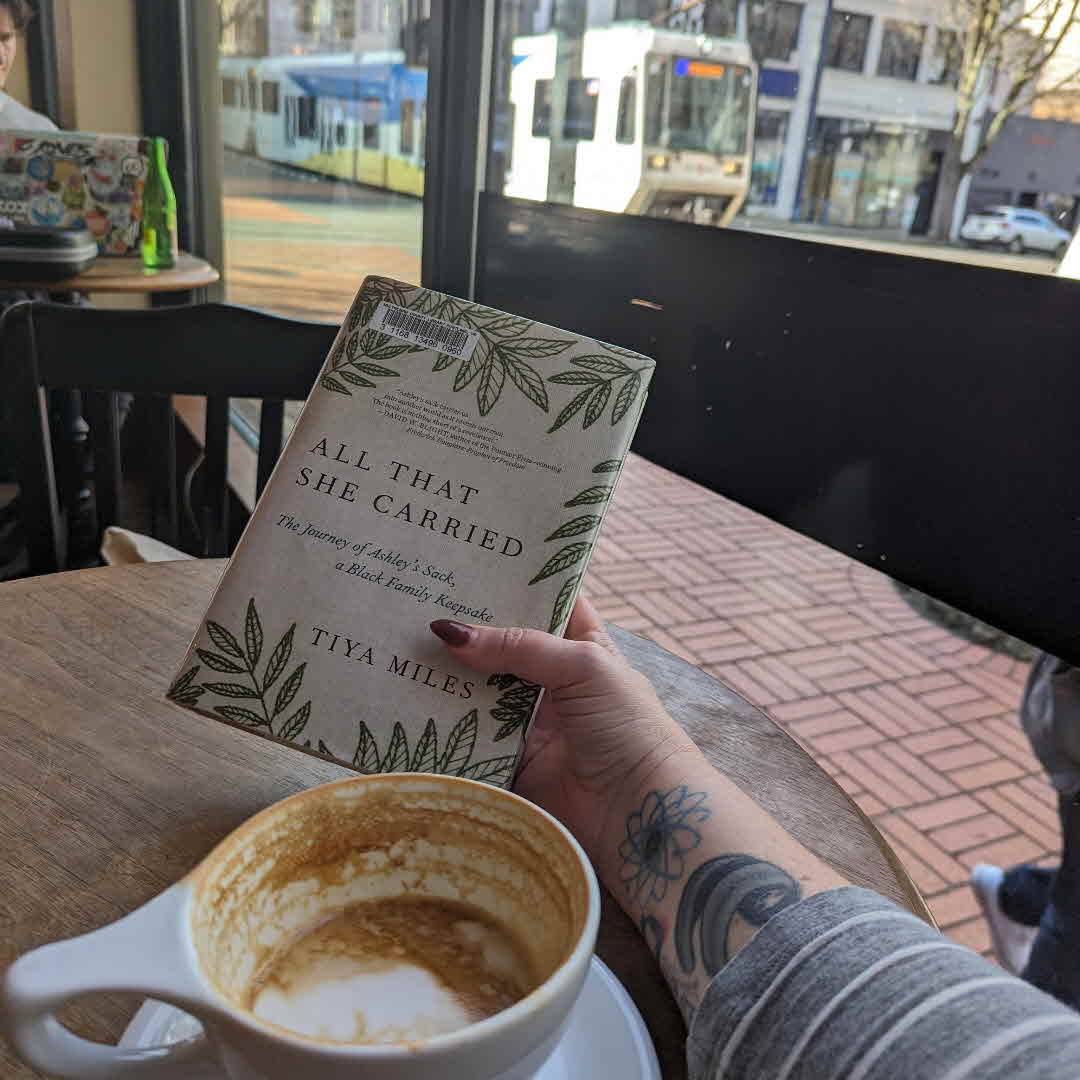
together this book. We are missing so much about life, culture, and genealogy surrounding enslaved people. I was curious about her volleying between the words enslaved people and un-free peoples. It seems she uses the terms interchangeably.
It was clever to take the items in the sack and use them as a launching point to tell about the lives of enslaved people.
👇

I can see why this book has made (and won) so many prize lists—complex and affecting. Audiobook was very well done, but it was nice to have the print edition handy for the photos.
#WomensPrizeNF

What a heart breaking historical journey. These are the kinds of books we need: books that tell the truth about America‘s history: visceral, raw, and brutally honest. Slavery was much worse than what we can imagine. My home city, Charleston, will forever carry this shameful, ugly stain. This book centers on the journey of Ashley‘s sack, gifted to her by her mother Rose, on the eve of her sale, sometime in the 1850s—before finding its way to⬇️

An auction block was a real thing. We sometimes forget this. We allow the physicality of a rock worn smooth by time and the press of bare, stolen feet to slip from our awareness. But these mundane things – a concrete block, a wooden set, a hollow stump – were props for the ritual dehumanization of a people. Much like the “uniform” of Negro cloth, the auction block set a group apart in order to lower their social status and justify their⬇️

Enslavers tended to name their human property in ways that reaffirmed their own status and authority, while simultaneously demeaning the people named. The result was a denial of enslaved people‘s surnames, a slew of personal names that were the shortened form of European names (like Beck, Harry, or Jenny), names more fitting for household pets (like Hero, Cupid, or Captain), and names reminiscent of classical figures (like Dido, Caesar, or Venus)

How did we arrive here, with the memory of a tattered dress and yet another Black mother‘s daughter on an auction block? How did South Carolina become a place where the sale of a colored child was not only possible but probable? The answer lies in the willingness of an entire society to bend its shape around a set of power relations that structured human exploitation along racial lines for financial gain. While vending Black people to underwrite⬇️

Today the brick walls of Charleston seem picturesque, luxuriously fringed by palmetto fronds, burnt-orange trumpet vines, and snow-white gardenias hot with perfume. We admire the Old World intricacy of this storied city while taking photos of Charleston‘s famous iron gates. We see the tall, striking walls as elaborate garden boxes resplendent here as nowhere else in the nation. We gaze with longing glances at the seeming romance of another age⬇️

The Miles Brewton House fence with mounted spikes, 27 King Street, Charleston. The spikes were added to the plain ironwork fence after Denmark Vesey‘s rebellion plot of 1822.
💔

The particular Rose recalled to memory by Ruth Middleton‘s looping stitch may have been given this name by a mother or a caretaker. She could have been called Rose, a flower of Old English derivation, by one of the people who owned her. She may have garnered the nickname Rose because she loved summer blossoms. She may have borne a rose-shaped scar on the tender skin of her back. And she was not alone, this woman named Rose, whose naming remains⬇️

It is a madness, if not an irony, that unlocking the history of unfree people depends on the materials of their legal owners, who held the lion‘s share of visibility in their time and ours. Captive takers‘ papers and government records are often the only written accounting of enslaved people who could not escape and survive to tell their own stories. The wealthier and more influential the slaveholder, the more likely it is that plantation and ⬇️

It is the world‘s shortest slave narrative , stripped down to its essence, sent back to us through time like a message in a bottle.

#firstlinefriday
@ShyBookOwl
"We forgot that love is revolutionary, the word, cute and overused in American culture, can feel devoid of spirit, a dead letter suitable only for easy exchange on social media platforms."

The supple bends of the Ashley River ribbon the edge of the property. Dirt paths lead to stone ruins and delicate reflecting ponds shaped like butterfly wings—ponds that enslaved people dug by hand out of steaming, mosquito-thick mud banks. These pools are among the many luxuries exorbitant wealth bought in Charleston, one of this country‘s richest towns in the era of the American Revolution, due to rice and cotton profits of legalized slavery.

Just as Rose and Ashley found on their forced journeys through slavery landscape, there is no safe place of escape left for us. The walls of the world are closing in. We need to get out of here in a hurry. We need to get out of these frames of mind and states of emotion, that elevate mastery over compassion, division over connection, and greed over care, separating us one from another, and locking us in. Our only options in this predicament, ⬇️

This was amazing. Miles used Ashley‘s sack as a touchstone around which she based the history and livelihoods of enslaved men and women. This is on the long list for the women‘s prize for nonfiction.

My first book finished from the Women‘s Prize for NF long list, although I‘m in the throes of reading most of the rest at the same time! 😃
I really struggled with the style of this at the start and had to keep re-reading to digest what was being said, although most of it was fascinating information once I processed it, hence the pick.
The biggest issue I had was the stating as fact, things that could only be conjecture. For example ⬇️

#52bookclub24 #grievingcharacter #februaryminichallenge #blackauthorfavegenre #aty24 #relatedtosomethingireadlastyear (How the Word is Passed).
Low pick.
@BarbaraBB @Kristy_K @LaraReads @KarenUK @Hooked_on_books @BarkingMadRead @brittanyreads @Magpiegem @BookBelle84 @Larkken @julesG @Deblovestoread @MidnightBookListener @Librarybelle @triplem80 @Tove_Reads @Read4life @Bluebird @eeclayton @hissingpotatoes @Book_Lover95 @TheAromaofBooks @kwmg40
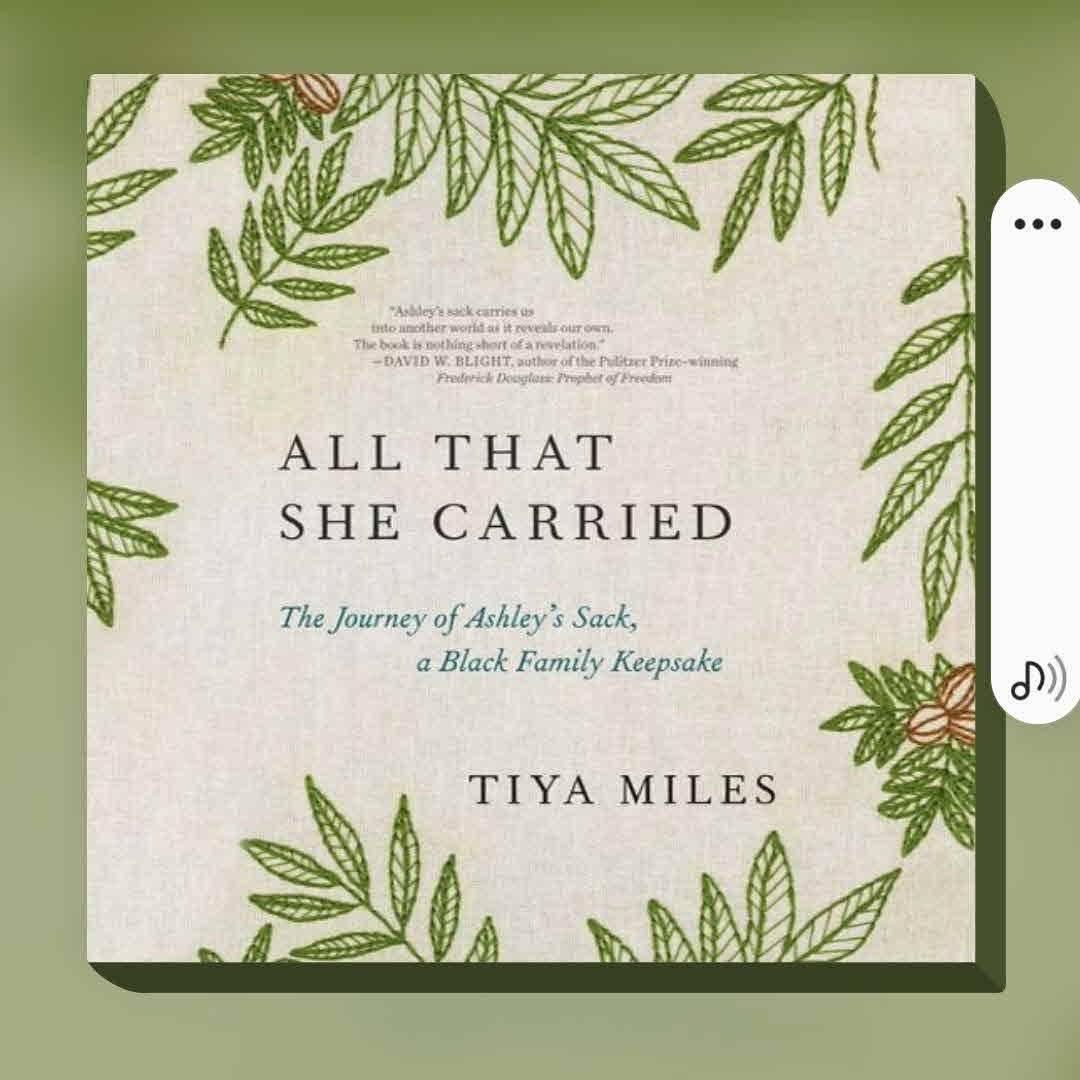
#womensnonfictionprize2024 First of what I hope.is many reads from The Women's Prize for nonfiction. This confronts the brutal history of slavery in the US South. Not new to me history, but it is important nonetheless. Great audio book. Recommend!

#bookreport #weeklyforecast
Finished Matrix
Continued The Time Traveller's Guide to Restoration Britain
Started tagged.
Apart from continuing tagged, I don't know what else.

Wow - that was intense. Thank you so much @Singout for pushing me out of my reading comfort zone. In another life I want to be a researcher - to be able to build worlds, recreate lives and give voices to people and tell them they matter and they‘re loved. A amazing story that went wide and personal and taught me a lot. #auldlangspine

I should really start my next IRL Bookclub book - but I enjoyed my first #auldlangspine book from @Singout so much that I‘m diving into the second pick from her list ( bookclub isn‘t for a few weeks - I‘ll speed read that one!🤣)

I read this with a book club at a local bookstore.
“My great grandmother Rose, mother of Ashley gave her this sack when she was sold at age 9 in South Carolina. It held a tattered dress, 3 handfuls of pecans, a braid of Roses hair. Told her It be filled with my Love always. She never saw her again. Ashley is my grandmother. Ruth Middleton 1921.”
⭐️⭐️⭐️⭐️⭐️

So good!!!
Really intriguing: not what I expected but multiple themes, in looking at the contents of a sack given from a mother to her enslaved child daughter, and then passed down through generations. The book reflects on each of the contents (a dress, pecans, a lock of hair) and how they fit into the context of history, the nature of enslavement, the family‘s history, and how such articles are preserved and controlled.
#SheSaid
#Nonfiction2023 #JustAGirl

This was not what I expected, but I still enjoyed the journey. I definitely wanted more on the family that had this sack and what became of their descendants, from the one who put the words onto the sack, going forward, and as far back as is traceable with limited records…what I got was more of a history of the sack itself and the things it contained, why they were important, why they had meaning at that time, ⤵️

Who knew that there could be so much meaning in a sack and it‘s contents; a tattered dress, 3 handfuls of pecans and a braid of hair?
This was what Rose packed for her daughter Ashely when she was sold at the age of 9. It‘s Ashely‘s granddaughter, Ruth who has embroidered on the sack.
I feel that I learned so much about Charleston, how it was build and what it was like to love there as a slave.
#SheSaid
@Riveted_Reader_Melissa

Hello #SheSaid!
Wrapping this one up this weekend. It may not have been what I was expecting, but I did still learn a lot. So still a pick for me. How about you? Final thoughts? Likes and Gripes?

While the story of Ashley's sack and the speculation about its history are powerful, important pieces of history, I struggled to get through this. I felt some of the tangents about items in the sack and connections among stories of other enslaved people added depth. I felt other parts were attempts to create a longer book than it needed to be to still have the same impact (the section on pecans, for example). ⬇️ #SheSaid @Riveted_Reader_Melissa

This is good. IMO the author didn't have a ton to work with.
#SheSaid @Riveted_Reader_Melissa
#BookSpinBingo @TheAromaofBooks

For #SheSaid. Middleton Place is mentioned in this article for anyone interested.
https://amp.theguardian.com/news/2019/aug/15/slavery-400-plantations-south-histo...

Hello #SheSaid! How are you this weekend? How‘s the book going for you?
So far, still not exactly what I expected… but still a lot of great that time and place history research and information…even if it‘s less about the sack itself than I thought it would be.
How are you doing with this book, this week or overall?

Hello #SheSaid
How infuriated are you feeling this weekend…I was still mad that her sack ended up back at the plantation helping to earn money through tourists to still support the plantation owners family… but now it‘s at the Smithsonian (on loan from the plantation‘s estate…making them money I‘m sure & bearing their name) and it isn‘t even that plantation! It‘s enriching another plantation owner…just like the people were sold & traded! 🤬

I had no idea that the number were this low.
From all the movies and books with this theme, I have always assumed that the number where higher.
Less than a 1000 in 400 years.
#SheSaid

Hello #SheSaid! Sorry for the late start today!
I‘ll see you in the comments 😉

Picked this up at the library today.
When I first searched for it, they didn‘t have it, but when @Riveted_Reader_Melissa posted the schedule for #SheSaid I had to check again.
The first sentence from the introduction really struck me:
“We forget that love is revolutionary.”

Rose was in existential distress that fateful winter when her would-be earthly master, Robert Mutton, passed away.
#FirstLineFridays @ShyBookOwl

Up next #SheSaid
If you‘d like to be added to our tag list and read with us, please just let me know.

Up next #SheSaid!
All That She Carried by Tiya Miles
Put in your library hold and interlibrary loans!
If you‘d like to be added to our tag list and join our discussion, just let me know.
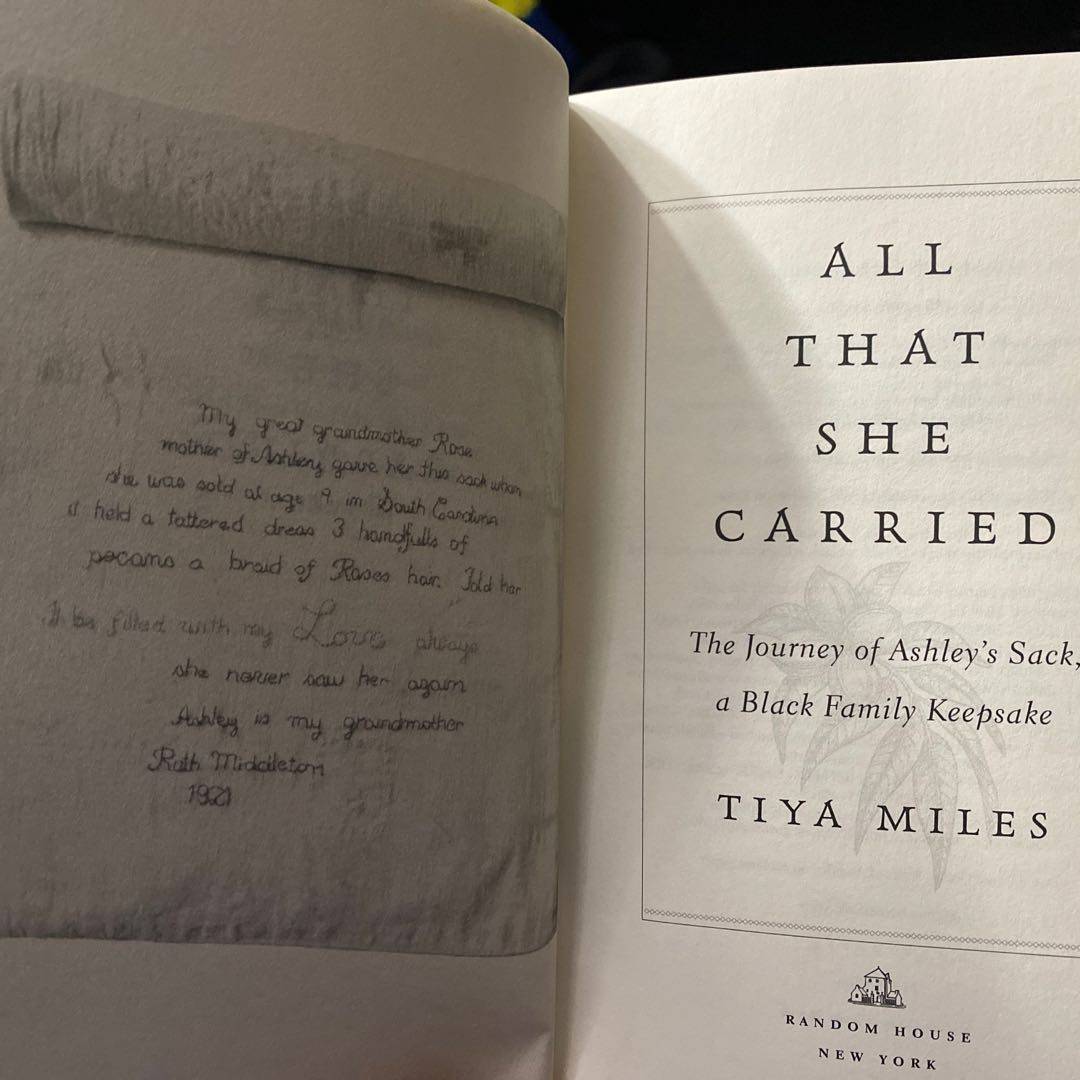
“This object was a marvel despite its lack of physical luster. It moved the emotions of viewers; so many of them succumbed to sobs..that the curator fell into the habit of handing out tissues besides the display. … it is the worlds shortest slave narrative, stripped down to its essence, sent back to us through time like a message in a bottle.” Beautiful concept, I wanted to love the book, but overly repetitive and at times boring.

@Chelsea.Poole clearly you've got great reading taste, All That She Carried just won The Cundhill History Prize!

“Tonight, in a ceremony at the Windsor Ballrooms in Montreal, Tiya Miles was awarded the $75,000 Cundill History Prize, which recognizes the best history writing in English. . . .“
https://lithub.com/tiya-miles-is-the-winner-of-the-2022-cundill-history-prize/